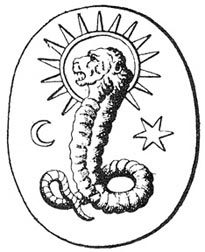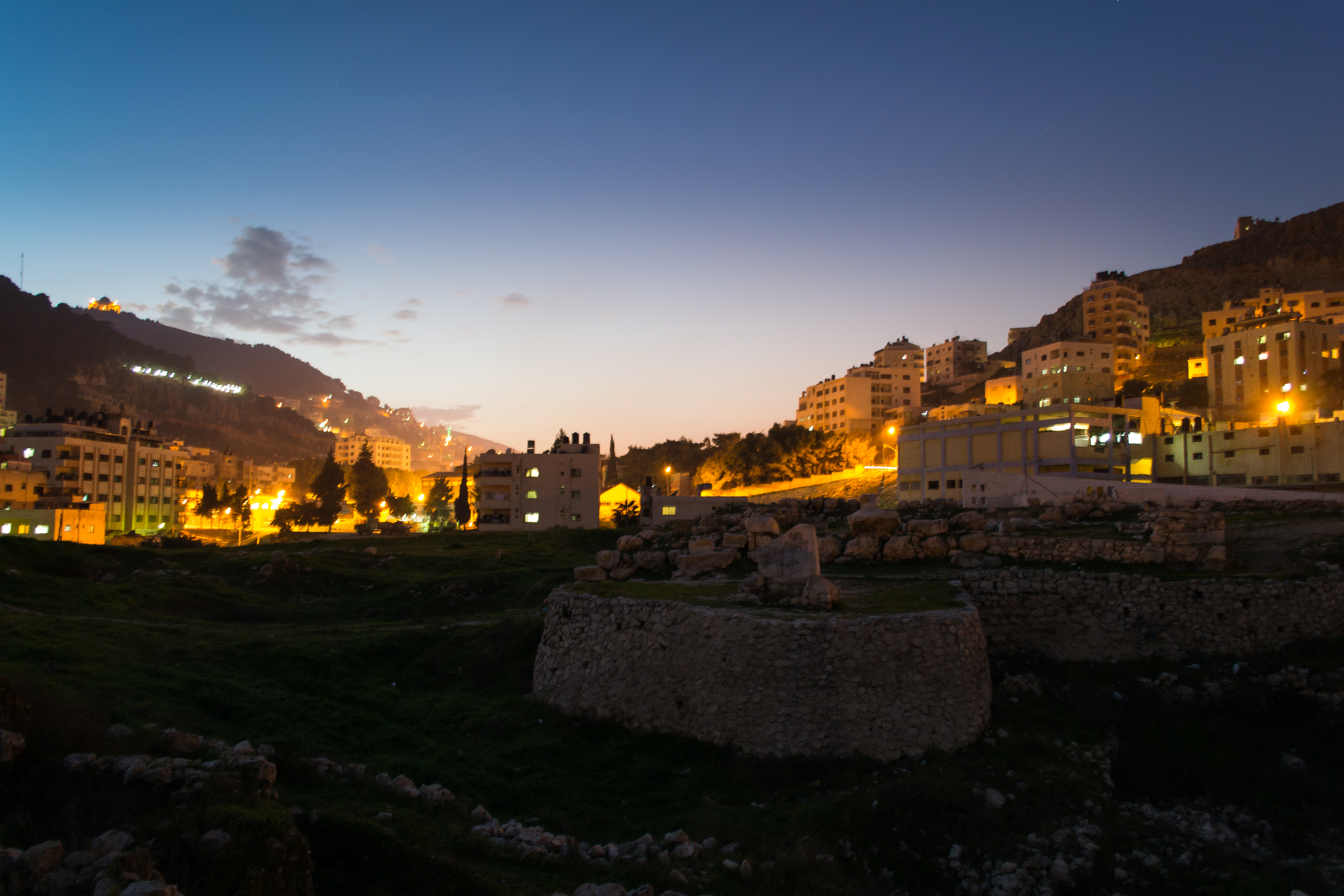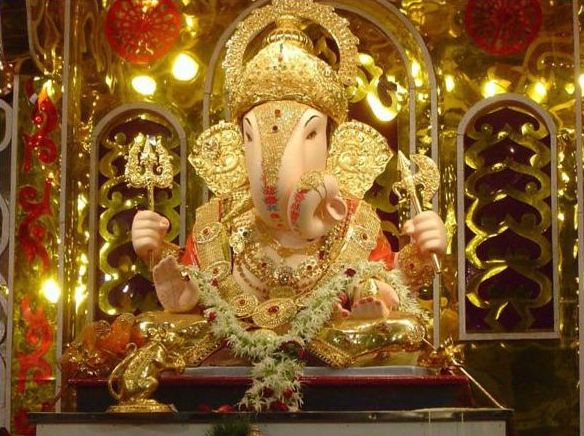|
Snake Worship
Snake worship is devotion to serpent deities. The tradition is nearly universal in the religions and mythologies of ancient cultures, where snakes were seen as the holders of knowledge, strength, and renewal. Near East Ancient Mesopotamia Ancient Mesopotamians and Semites believed that snakes were immortal because they could infinitely shed their skin and appear forever youthful, appearing in a fresh guise every time. The Sumerians worshipped a serpent god named Ningishzida. Before the arrival of the Israelites, snake cults were well established in Canaan in the Bronze Age, for archaeologists have uncovered serpent cult objects in Bronze Age strata at several pre-Israelite cities in Canaan: two at Megiddo, one at Gezer, one in the ''sanctum sanctorum'' of the Area H temple at Hazor, and two at Shechem. In the surrounding region, serpent cult objects figured in other cultures. A late Bronze Age Hittite shrine in northern Syria contained a bronze statue of a god holding a ser ... [...More Info...] [...Related Items...] OR: [Wikipedia] [Google] [Baidu] |
Serpent God Ningishzida On The Libation Vase Of Gudea, Circa 2100 BCE
Serpent or The Serpent may refer to: * Snake, a carnivorous reptile of the suborder Serpentes Mythology and religion * Sea serpent, a monstrous ocean creature * Serpent symbolism, the snake in religious rites and mythological contexts * Serpents in the Bible, notably one in the Old Testament Garden of Eden * Snakes in Chinese mythology * Snakes in mythology Arts and entertainment * ''Serpent'' (novel), a 1999 novel by Clive Cussler * Serpent (roller coaster), a steel roller coaster at Six Flags AstroWorld * ''Serpent'' (video game), a 1990 Game Boy action video game * ''The Serpent'', a play created by The Open Theater * "The Serpent" (''Da Vinci's Demons''), second episode of the American TV series ''Da Vinci's Demons'' * ''The Serpent'' (novel), a 1963 novel by Jane Gaskell * "The Serpent" (''Once Upon a Time in Wonderland''), an episode of the series ''Once Upon a Time in Wonderland'' * ''The Serpent'' (TV series), a 2021 miniseries co-produced by BBC One and Netflix ... [...More Info...] [...Related Items...] OR: [Wikipedia] [Google] [Baidu] |
Ningishzida
Ningishzida ( Sumerian: DNIN.G̃IŠ.ZID.DA, possible meaning "Lord f theGood Tree") was a Mesopotamian deity of vegetation, the underworld and sometimes war. He was commonly associated with snakes. Like Dumuzi, he was believed to spend a part of the year in the land of the dead. He also shared many of his functions with his father Ninazu. In myths he usually appears in an underworld setting, though in the myth of Adapa he is instead described as one of the doorkeepers of the sky god Anu. Name Thorkild Jacobsen proposed that the Sumerian name ''Ningishzida'' can be explained as "lord of the good tree." This translation is still accepted by other Assyriologists today. Various syllabic spellings are known, including '' dNi-gi-si-da'', ''dNin-nigi-si-da'', ''dNin-ki-zi-da'' and ''dNin-gi-iz-zi-da''. While " nin" can be translated as "lady" in some contexts, it was grammatically neutral in Sumerian and can be found in the names of many deities, both male (Ningishzida, Ninaz ... [...More Info...] [...Related Items...] OR: [Wikipedia] [Google] [Baidu] |
Tepe Gawra
Tepe Gawra (also Tepe Gaura) is an ancient Mesopotamian settlement NNE of Mosul in northwest Iraq that was occupied between 5000 and 1500 BC. It is roughly a mile from the site of Nineveh and 2 miles E of the site of Khorsabad. It contains remains from the Halaf period, the Ubaid period, and the Uruk period (4000–3100 BC). Tepe Gawra contains material relating to the Halaf-Ubaid Transitional period c. 5,500–5,000 BC. Tell Arpachiyah is a contemporary Neolithic site nearby. At Yarim Tepe, located about to the west of Gawra, the uppermost levels of the Halaf cultural deposits are analogous to the Arpachiyah levels TT-6 to TT-8, and Tepe Gawra levels XVIII-XX. Archaeology The tell or settlement mound at Tepe Gawra is in diameter and high. A brief exploratory dig was performed by Austen Layard in 1849 who stated "By my directions deep trenches were opened into its sides, but only fragments of pottery were discovered". The site was formally excavated in 1927 and between ... [...More Info...] [...Related Items...] OR: [Wikipedia] [Google] [Baidu] |
Ancient Near Eastern Texts Relating To The Old Testament
''Ancient Near Eastern Texts Relating to the Old Testament'' edited by James B. Pritchard (1st ed. 1950, 2nd ed.1955, 3rd ed. 1969) is an anthology of important historical, legal, mythological, liturgical, and secular texts in biblical archaeology. Description In spite of the name, the included texts have broad coverage and do not necessarily relate to the Old Testament. William W. Hallo, writing in the ''Journal of the American Oriental Society'' in 1970, described it as "a modern classic ever since its first appearance in 1950", because "for the first time it assembled some of the most significant Ancient Near Eastern texts in authoritative, generously annotated English translations based on the accumulated insight of several generations of scholarship scattered". It is conventional to cite the work as ANET. ANEP refers to a companion volume ''Ancient Near Eastern Pictures Relating to the Old Testament'' (1st ed. 1954, 2nd ed. 1969), featuring 882 black and white designs an ... [...More Info...] [...Related Items...] OR: [Wikipedia] [Google] [Baidu] |
Nabu
Nabu (, ) is the Babylonian patron god of literacy, scribes, wisdom, and the rational arts. He is associated with the classical planet Mercury in Babylonian astronomy. Etymology and meaning The Akkadian means 'announcer' or 'authorised person', derived from the Semitic root or . It is cognate with , , and , all meaning 'prophet'. History Nabu was worshiped by the Babylonians and the Assyrians. Nabu gained prominence among the Babylonians in the 1st millennium BC when he was identified as the son of the god Marduk. Nabu was worshipped in Babylon's sister city Borsippa, from where his statue was taken to Babylon each New Year so that he could pay his respects to his father. Nabu's symbols included a stylus resting on a tablet as well as a simple wedge shape; King Nabonidus, whose name references Nabu, had a royal sceptre topped with Nabu's wedge. Clay tablets with especial calligraphic skill were used as offerings at Nabu's temple. His wife was the Akkadian goddess Tash ... [...More Info...] [...Related Items...] OR: [Wikipedia] [Google] [Baidu] |
Esagila
The Ésagila or Esangil ( , ''"temple whose top is lofty"'') was a temple dedicated to Marduk, the protector god of Babylon. It lay south of the ziggurat Etemenanki. Description In this temple was the statue of Marduk, surrounded by cult images of the cities that had fallen under the hegemony of the Babylonian Empire from the 18th century BC; there was also a little lake which was named '' Abzu'' by the Babylonian priests. This ''Abzu'' was a representation of Marduk's father, Enki, who was god of the waters and lived in the ''Abzu'' that was the source of all the fresh waters. Esarhaddon, king of the Neo-Assyrian Empire (681 – 669 BC), reconstructed the temple. He claimed that he built the temple from the foundation to the battlements, a claim corroborated by dedicatory inscriptions found on the stones of the temple's walls on the site. The Esagila complex, completed in its final form by Nebuchadnezzar II (604–562 BC) encasing earlier cores, was the center of Babylon. ... [...More Info...] [...Related Items...] OR: [Wikipedia] [Google] [Baidu] |
History Of The Hittites
The Hittites () were an Anatolian Indo-European people who formed one of the first major civilizations of the Bronze Age in West Asia. Possibly originating from beyond the Black Sea, they settled in modern-day Turkey in the early 2nd millennium BC. The Hittites formed a series of polities in north-central Anatolia, including the kingdom of Kussara (before 1750 BC), the Kanesh or Nesha Kingdom (–1650 BC), and an empire centered on their capital, Hattusa (around 1650 BC). Known in modern times as the Hittite Empire, it reached its peak during the mid-14th century BC under Šuppiluliuma I, when it encompassed most of Anatolia and parts of the northern Levant and Upper Mesopotamia, bordering the rival empires of the Hurri-Mitanni and Assyrians. Between the 15th and 13th centuries BC, the Hittites were one of the dominant powers of the Near East, coming into conflict with the New Kingdom of Egypt, the Middle Assyrian Empire, and the Empire of Mitanni. By the 12th century BC ... [...More Info...] [...Related Items...] OR: [Wikipedia] [Google] [Baidu] |
Shechem
Shechem ( ; , ; ), also spelled Sichem ( ; ) and other variants, was an ancient city in the southern Levant. Mentioned as a Canaanite city in the Amarna Letters, it later appears in the Hebrew Bible as the first capital of the Kingdom of Israel (Samaria), Kingdom of Israel following the split of the Kingdom of Israel (united monarchy), United Monarchy. According to , it was located in the tribal territorial allotment of the tribe of Ephraim. Shechem declined after the fall of the Kingdom of Israel (Samaria), northern Kingdom of Israel. The city later regained its importance as a prominent Samaritans, Samaritan center during the Hellenistic Palestine, Hellenistic period. Traditionally associated with the city of Nablus, Shechem is now identified with the nearby site of Tell Balata in the Balata al-Balad suburb of the West Bank. Geographical position Shechem's position is indicated in the Hebrew Bible: it lay north of Bethel and Shiloh (Biblical city), Shiloh, on the high road ... [...More Info...] [...Related Items...] OR: [Wikipedia] [Google] [Baidu] |
Tel Hazor
Tel Hazor (), translated in LXX as Hasōr (), and in Arabic Tell Waqqas or Tell Qedah el-Gul (), is an archaeological Tell (archaeology), tell at the site of ancient Hazor, located in the Upper Galilee, north of the Sea of Galilee, in the northern Korazim Plateau. From the Middle Bronze Age (around 1750 BCE) to the Iron Age (ninth century BCE), Hazor was the largest fortified city in the region and one of the most important in the Fertile Crescent. It maintained commercial ties with Babylon and Syria, and imported large quantities of tin for the bronze industry. In the Book of Joshua, Hazor is described as "the head of all those kingdoms" () and archaeological excavations that have emphasized the city's importance. The Hazor expedition, headed by Yigael Yadin in the mid-1950s, was the most important dig undertaken by Israel in its early years of statehood. Tel Hazor is the largest archaeological site in northern Israel, featuring an upper tell of 30 acres and a lower city of more ... [...More Info...] [...Related Items...] OR: [Wikipedia] [Google] [Baidu] |
Gezer
Gezer, or Tel Gezer (), in – Tell Jezar or Tell el-Jezari is an archaeological site in the foothills of the Judaean Mountains at the border of the Shfela region roughly midway between Jerusalem and Tel Aviv. It is now an List of national parks and nature reserves of Israel, Israeli national park. In the Hebrew Bible, Gezer is associated with Joshua and Solomon. The archaeological site of Tel Gezer rises to an elevation of above sea-level, and affords a commanding prospect of the plains to the west, north and east. Gezer became a major fortified Canaanite city-state in the first half of the 2nd millennium BCE. It was later destroyed by fire and rebuilt. It is first mentioned in several Ancient Egypt, ancient Egyptian inscriptions. Its importance was due in part to the strategic position it held at the crossroads of the Via Maris, ancient coastal trade route linking Egypt with Syria, Anatolia and Mesopotamia, and the road to Jerusalem and Jericho, both important trade routes. I ... [...More Info...] [...Related Items...] OR: [Wikipedia] [Google] [Baidu] |
Tel Megiddo
Tel Megiddo (from ) is the site of the ancient city of Megiddo (; ), the remains of which form a tell or archaeological mound, situated in northern Israel at the western edge of the Jezreel Valley about southeast of Haifa near the depopulated Palestinian town of Lajjun and subsequently Kibbutz Megiddo. Megiddo is known for its historical, geographical, and theological importance, especially under its Greek name Armageddon. During the Bronze Age, Megiddo was an important Canaanite city-state. During the Iron Age, it was a royal city in the Kingdom of Israel. Megiddo's strategic location at the northern end of the defile of the Wadi Ara, which acts as a pass through the Carmel Ridge, and its position overlooking the rich Jezreel Valley from the west gave it much of its importance. Excavations have unearthed 20 strata of ruins since the Neolithic phase, indicating a long settlement period. The site is protected as Megiddo National Park and is a World Heritage Site. Et ... [...More Info...] [...Related Items...] OR: [Wikipedia] [Google] [Baidu] |
Cult Object
In the practice of religion, a cult image is a Cultural artifact, human-made object that is venerated or worshipped for the deity, Spirit (supernatural entity), spirit or Daimon, daemon that it embodies or represents. In several traditions, including the ancient religions of Ancient Egypt, Egypt, Ancient Greece, Greece and Rome, and Hinduism, cult images in a temple may undergo a daily routine of being washed, dressed, and having food left for them. Processions outside the temple on special feast days are often a feature. Religious images cover a wider range of all types of images made with a religious purpose, subject, or connection. In many contexts "cult image" specifically means the most important image in a temple, kept in an inner space, as opposed to what may be many other images decorating the temple. The term idol is an image or representation of a god used as an object of worship, while idolatry is the worship of an "idol" as though it were God. Ancient Near East and E ... [...More Info...] [...Related Items...] OR: [Wikipedia] [Google] [Baidu] |






